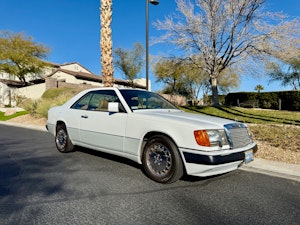Nissan Electrifies an R32 GT-R
The sonorous, 2.6-liter twin-turbocharged straight-six is a big part of the R32-generation Nissan GT-R‘s appeal. But if you’d rather enjoy a classic GT-R in silence, you’ll like the concept Nissan brought to the 2025 Tokyo Auto Salon. The brand rummaged through its parts bin to turn the R32 into an electric car.
Nissan describes the build as “a passion project” and explains the idea came from Ryozo Hiraku, one of its EV drivetrain engineers. “I wonder if 30 years from now—in 2055 or beyond—owners of this incredible machine could still buy gasoline and enjoy driving it,” the engineer said. “I saw merit in using electrical and digital technology to replicate the appeal of the R32 GT-R so future generations could experience it.”
It’s a good question. Whether the answer is an EV swap, something along the lines of Porsche’s e-fuel, or something else entirely is a different (and highly contentious) topic that’s best saved for another story.


Back to the road: Nissan chose to take the electric route, so it replaced the twin-turbo straight-six with a pair of electric motors (one per axle for through-the-road all-wheel-drive) each rated at 214 horsepower and 250 pound-feet of torque. The motors draw power from a 62-kilowatt-hour lithium-ion battery pack borrowed from the Leaf and integrated into the space where you’d normally find the rear seats, which transforms the electric R32 into a two-seater. The charging port is hidden behind the fuel filler door.
The development team’s goal was to match, not exceed, the stock R32’s performance while taking into account the weight added by the electric drivetrain. For context, an unmodified R32-generation GT-R weighs 3,152 pounds, while the EV tips the scale at 3,961 pounds. Weigh affects handling, so Nissan added a Nismo Sports suspension kit that includes Öhlins dampers to dial in relatively sharp handling.
Marketplace
Buy and sell classics with confidence
Keeping the weight in check also required upgrading the brakes. Engineers fitted calipers and rotors from the R35-generation GT-R for more stopping power, and they even made 18-inch wheels that look just like the 16-inch units fitted to the R32 when it was new. Nissan clearly put a lot of resources into this project.

Visually, the battery-powered R32 could pass as a stock, gasoline-burning model, and it sounds like that was intentional. Nissan didn’t want the EV to scream “look at me, I’m electric!” Inside, the project’s aim was to make the electric R32 feel like the twin-turbo model. Speakers pipe in a noise inspired by the 2.6-liter straight-six’s sound and a pair of paddles simulate gear shifts. Nissan proudly points out that it even programmed “the sensation of shift shock into the paddle shift logic, simulating the brief jolt a driver experiences when engaging the clutch and shifting up or down through a mechanical gearbox.”
Several other modifications are scattered across the cabin, including Recaro seats and updated gauges.
Nissan stresses it has no plans to start selling an EV conversion kit, though it claims the lessons learned during the development process might help its engineers develop future EVs. Don’t forget that the GT-R’s future is up in the air. The current, R35-generation model will retire in the near future after over a decade on the market, and many rumors claim that its successor will land with some degree of electrification.





















No thanks. “Nissan screws up an R32 GT-R” would be more accurate.